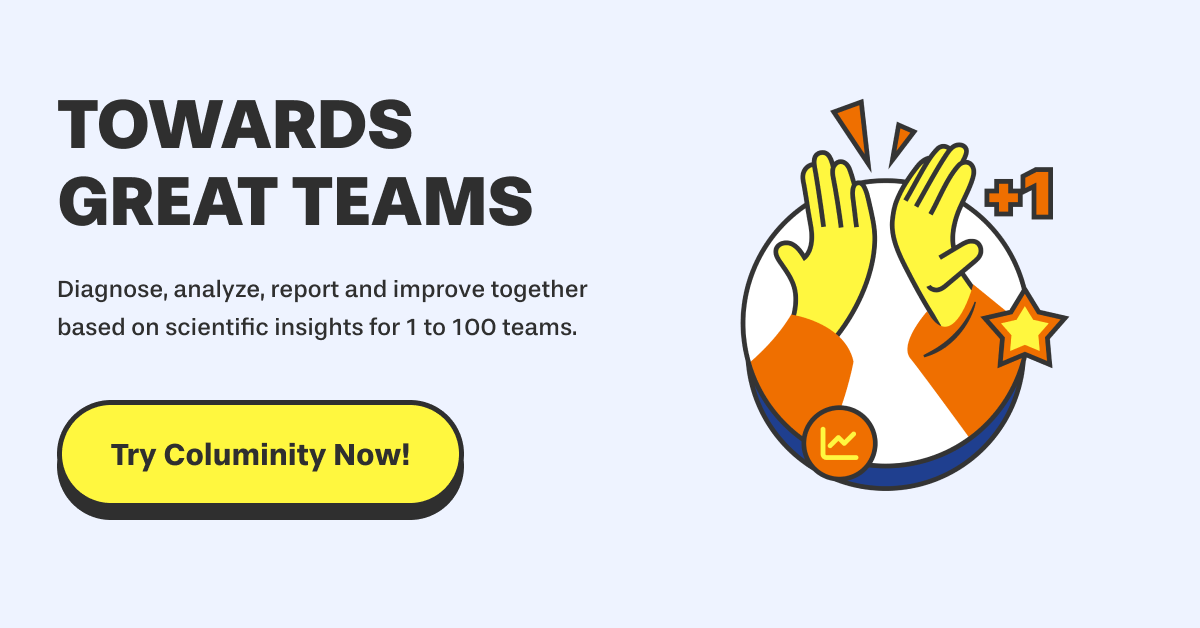How To Practice Action Research With Columinity
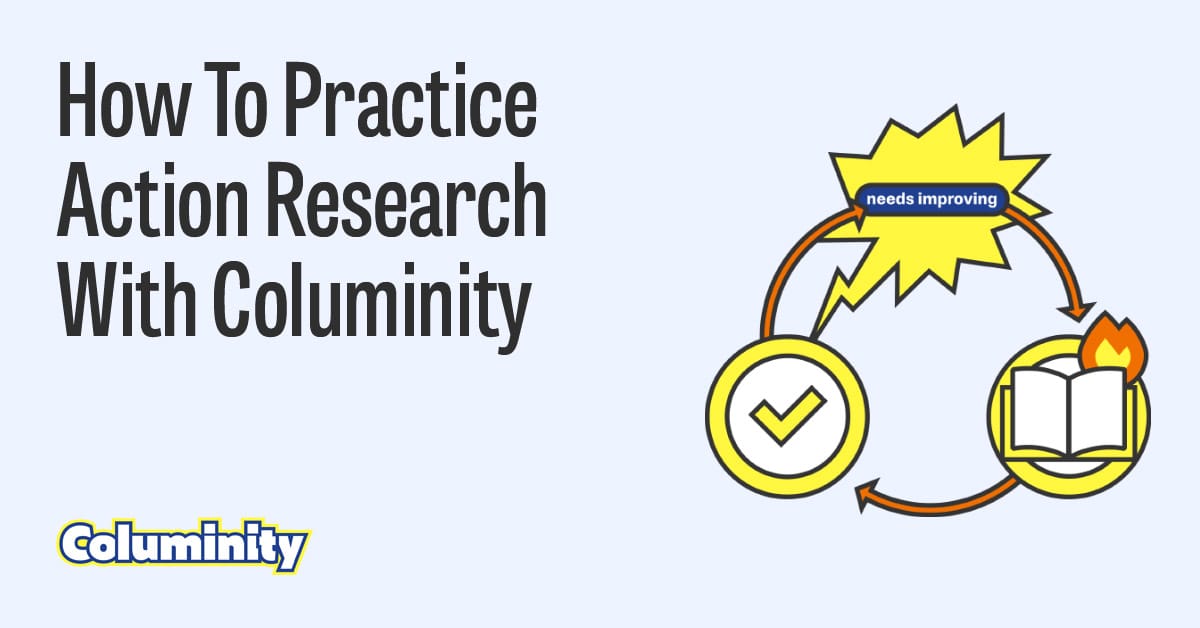
Columinity is based on a philosophy called Action Research. Its guiding principles have informed the design and implementation of most of our features.
Action Research is a systematic approach to problem-solving that involves scientists and practitioners collaborating to collect and analyze data, identify improvements, and implement them iteratively. Initially coined by the organizational psychologist Kurt Lewin in the mid-1900s, it has since been adopted in many fields to create enduring, robust, and evidence-based change. It has inspired many adjacent approaches, such as Action Learning, Organizational Development, Action Science, and Action Research. Action Research is not a framework or methodology but a way to approach systemic change.
Who is part of Action Research?
Ideally, everyone with a stake in solving a problem or improving a process should be involved. In the context of Columinity, this means team members, stakeholders (like users, customers), and people around teams (like leaders, management, and coaches). However, Action Research also includes researchers or people with a scientific mindset. Their experience is needed to reliably measure processes, assist in correctly understanding the results, and help in evaluation.
Diagnose, act, evaluate, repeat
In its simplest form, Action Research begins with a problem participants want to solve or a process they want to improve.
- Diagnose: The participants - professionals and researchers - work together to collect and interpret data. They identify patterns in the observations that might allude to deeper causes or areas of improvement.
- Act: The participants then formulate hypotheses about what might address the patterns they observed (i.e., the underlying causes) and translate this into actionable improvements that should meaningfully improve the process.
- Evaluate: The participants work together to determine how to evaluate the improvements through verification or falsification. What data and measurements are needed? What could mess up the measurements? And when should the following diagnosis take place?
These three steps repeat and inform each other continuously. Each step can be iterative, with multiple deeper and deeper diagnosis cycles before moving into action. However, the steps are also non-linear in that new patterns can be identified during the act step, and new actions can be identified during evaluation.
The poster below encapsulates these steps in the way we use it with organizations and Columinity:
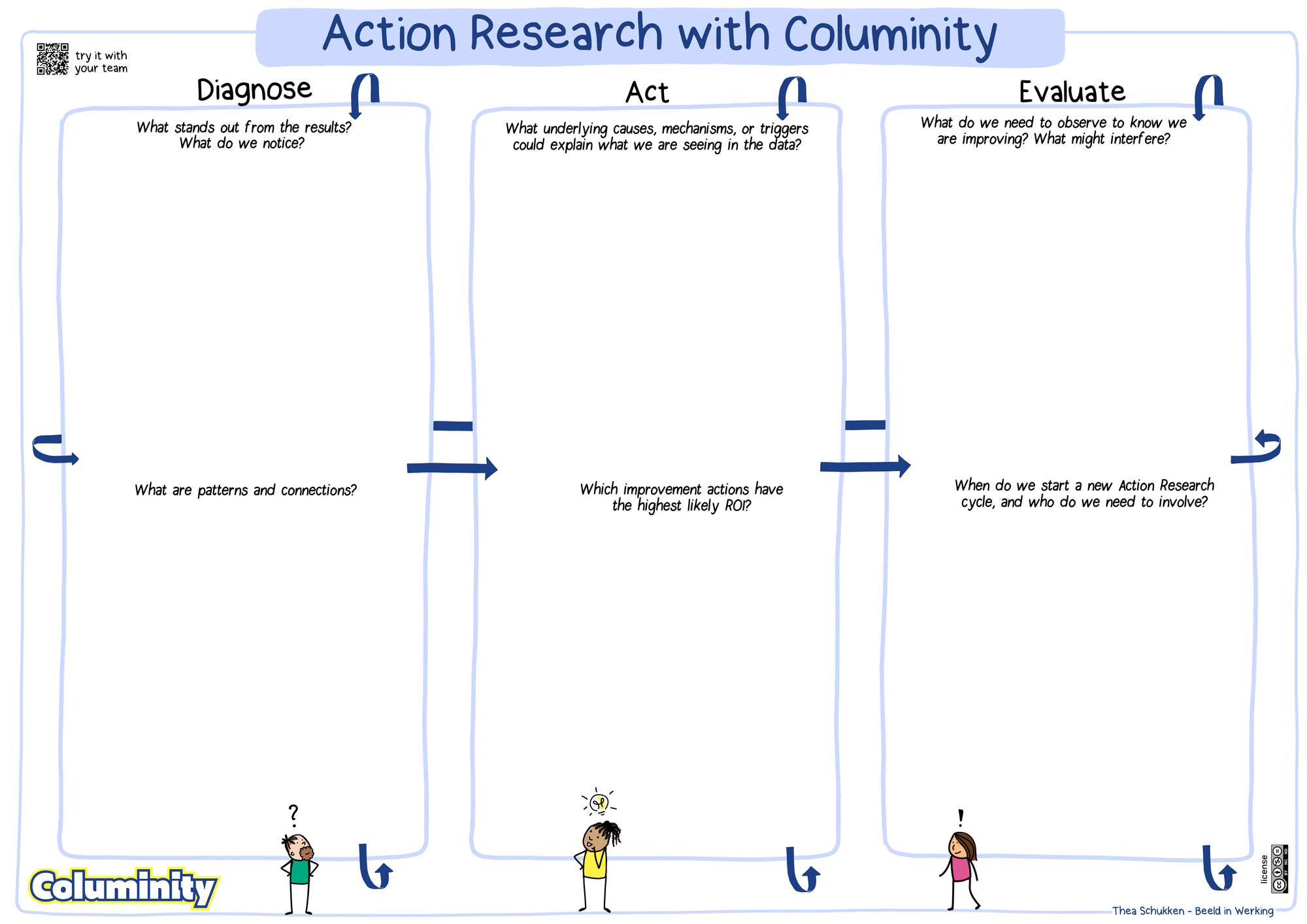
What we love about Action Research is that it enables five things that we value:
- It is collaborative. Ideally, everyone impacted by the change should be able to contribute and participate.
- It emphasizes the value of robust measurement and data as input to diagnose what is happening in a system (e.g., a team or organization) and evaluate whether improvements have the desired impact.
- It is iterative. While action research has broad steps (diagnose, act, evaluate), it is always cyclical. Once a diagnosis leads to action, the impact of those actions must be reevaluated to inform future actions.
- It is flexible. The phases are not linear. Defining improvement actions can adjust the diagnosis, whereas new actions can be identified during evaluation.
- It encourages organizations to rely on evidence and scientific methods to improve processes and solve problems. It is also inherently pragmatic, accepting that scientific detachment is impossible and that no measurement or analysis will be perfect.
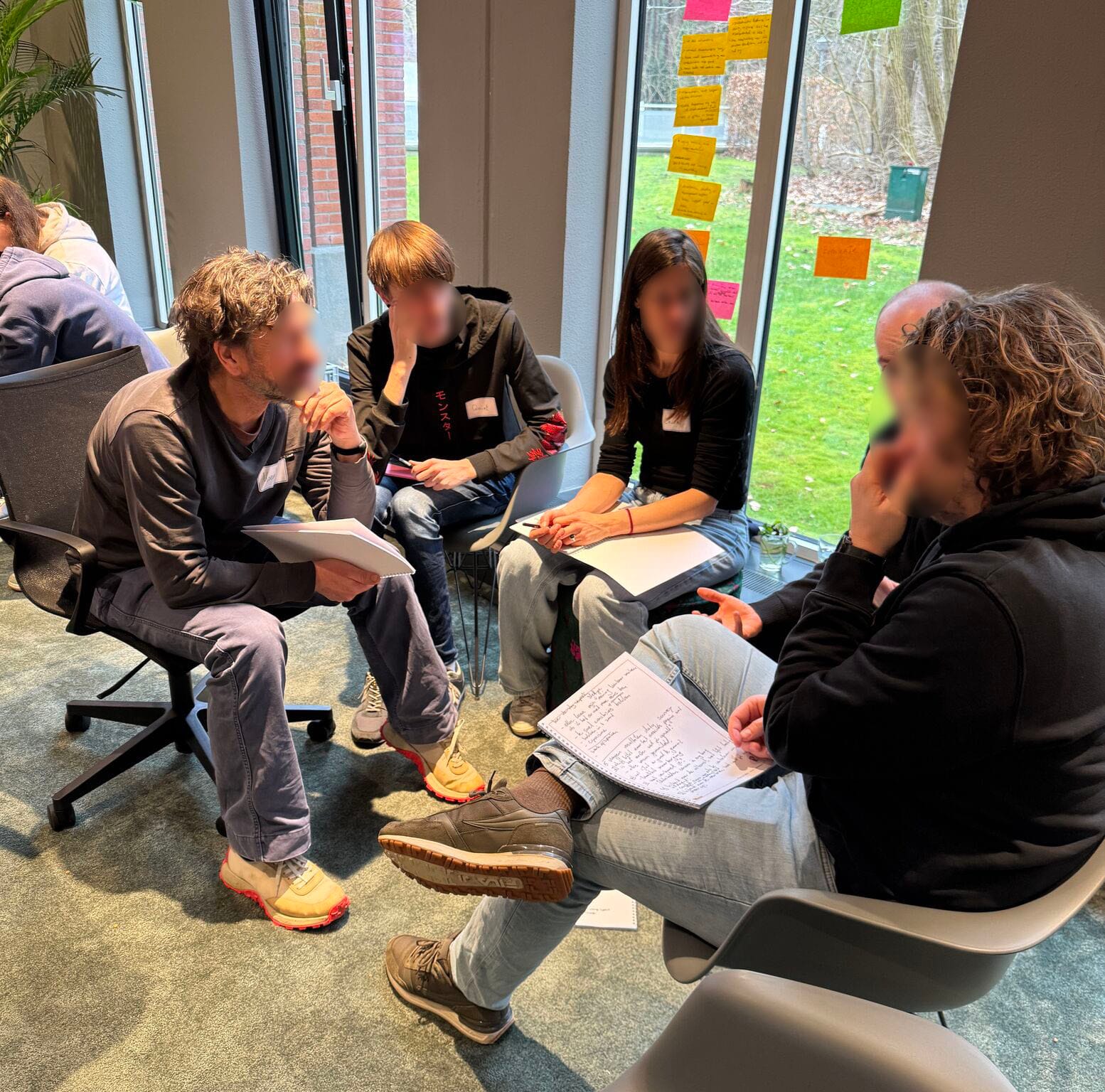
How to practice with Columinity
Columinity is designed to encourage Action Research in individual teams and many teams in the same organization:
- To diagnose, scan your team(s) at http://questionnaire.columinity.com. We provide each team with a detailed report and extensive feedback immediately after completion. We highly encourage you to invite all team members, and as many stakeholders and supporters as possible to build a rich dataset. Add more data from other sources for an even richer diagnosis. We also provide detailed facilitation guides to facilitate diagnosis sessions in a way that allows everyone to contribute equally.
- To act, Columinity offers science-based recommendations to improve your team or teams in your organization. We also provide many facilitation guides to dig deeper into particular areas to identify underlying issues and creative solutions. Keep track of improvement actions in Columinity, and mark what effects you expect them to have (your hypotheses) on the various measured factors to facilitate evaluation.
- To evaluate, scan your teams again one or two months later. Evaluate the results with everyone involved and establish if your improvement actions had the desired impact. If not, identify other improvements or seek deeper causes. If they did, move on to the next problem you want to address.


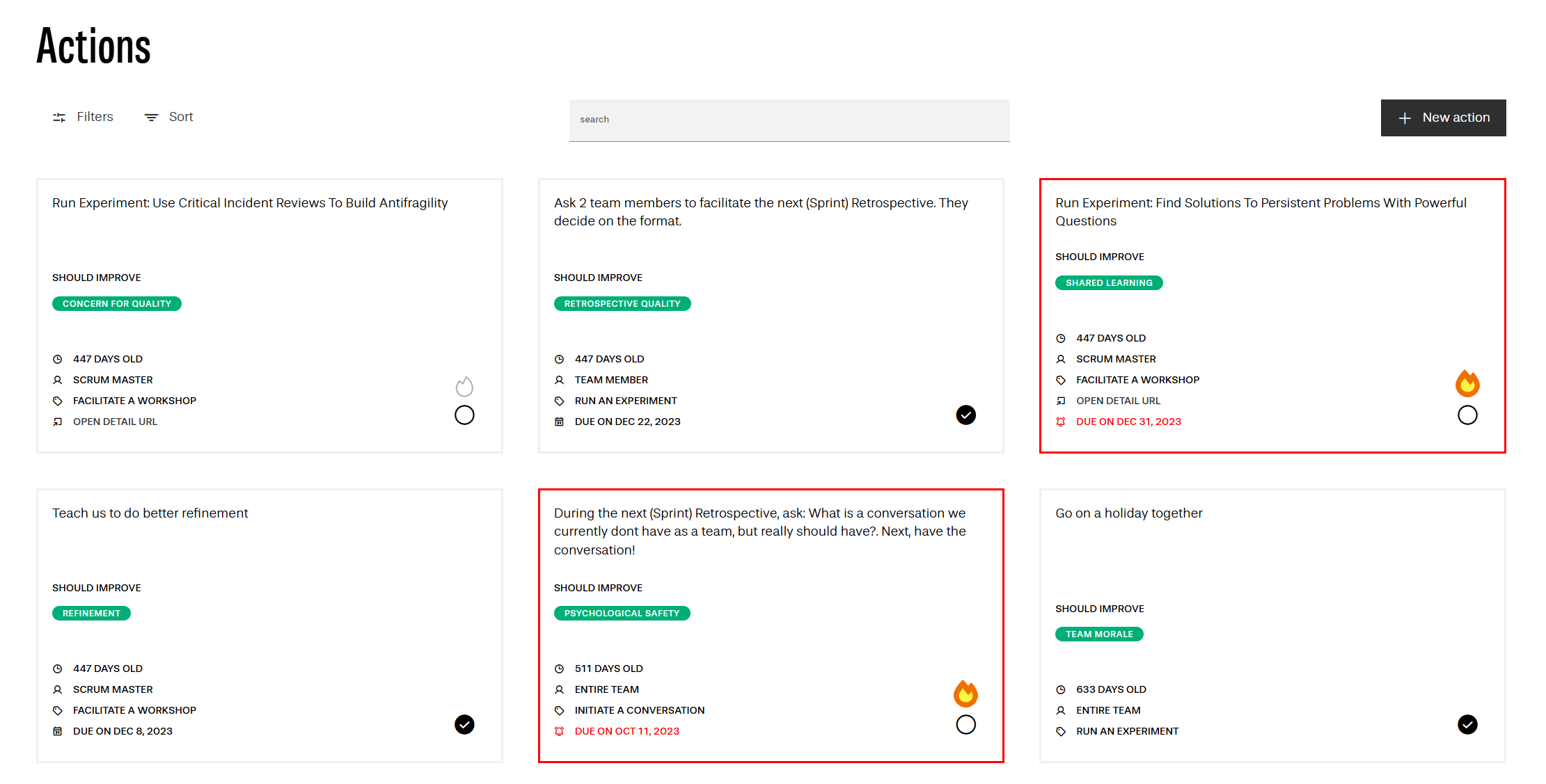
Analyze your teams, identify improvements and track them
Columinity should ideally be one source of data but not the only one. Drawing in data from other metrics can create a richer diagnosis and evaluation.
Action Research at scale
While Action Research can be applied to single teams, this invites the risk of sub-optimization. Many challenges teams face in the modern-day workplace transcend individual teams and concern aspects related to leadership, strategy, culture, and dependencies. Therefore, Action Research is best practiced on a larger scale.
Columinity supports this through its Teams Dashboard and Coaching Center where the results from dozens to hundreds of teams can be aggregated and filtered to quickly identify patterns across teams.
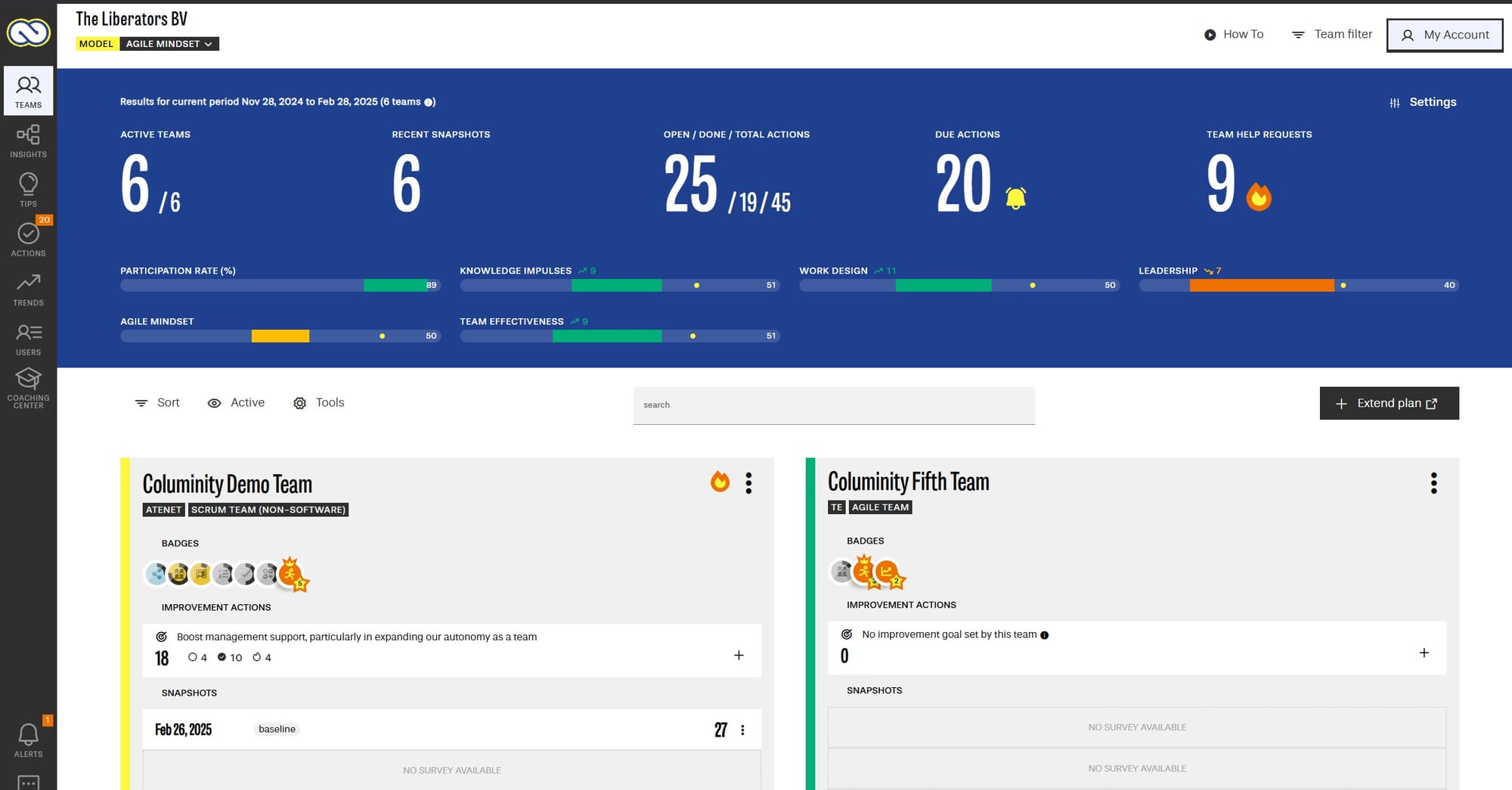
With its intelligent aggregation and analytical algorithms, Columinity allows leaders and coaches to:
- Identify where teams struggle and provide support where it is needed.
- Demonstrate how their actions and decisions impact the results over time.
- Diagnose how well small and large interventions impact team effectiveness. This provides a powerful opportunity to calculate ROI for training, change initiatives, team coaching, and other interventions.
Benefit from and contribute to research
Columinity is built on scientific models that are peer-reviewed by academic peers. Our science team includes Christiaan Verwijs, Prof. Daniel Russo, and Dr. Karen Eilers. Columinity's feedback to teams based on their results is grounded in scientific evidence where possible and translated to actionable improvements. This allows your team and organization to benefit from robust knowledge.
At the same time, you help our ongoing scientific research by using Columinity. We've already published several peer-reviewed academic studies on anonymized, team-level data we collected and have more planned.
Try it now
Begin with Action Research and try Columinity at https://columinity.com/try. It is free for individual teams. With our paid plans, you can unlock organizational analyses. Good to know: We offer facilitated Action Research workshops to help teams diagnose, act, and evaluate results together. Contact us for details!
